British Airways Hackathon
In a dynamic 24-hour cross-collaboration effort, we partnered with Software Engineers and Data Scientists to tackle a challenge from British Airways. Our mission was to develop innovative strategies encouraging customers to use flight vouchers when booking. Focusing on creative solutions, our goal was to boost the appeal of vouchers, leading to heightened customer engagement and satisfaction throughout the booking process.
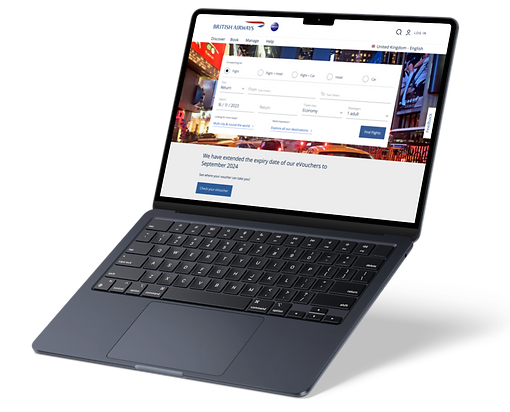
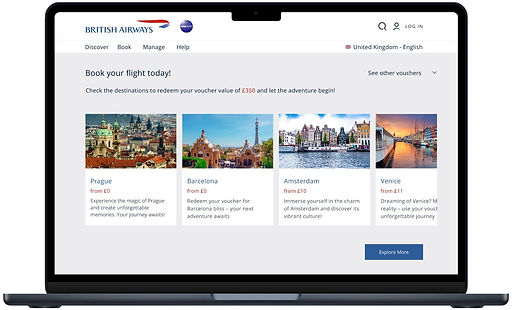
Duration:
24 hours (17.11.23)
Team:
UX/UI Designers:
Madi Leal, Medina Nabiyeva
Software Engineers:
Olivia Chu, Lara Russo, Fioren Nathasian
Data Scientists:
Faisal Abu, Mohamed Farah
My Role: UX/ UI Designer
The challenge
British Airways customers whose flights or holidays were delayed or cancelled in 2020-2021 could exchange their payment for a voucher to use later. Since 2020, many travel vouchers issued have gone unused.
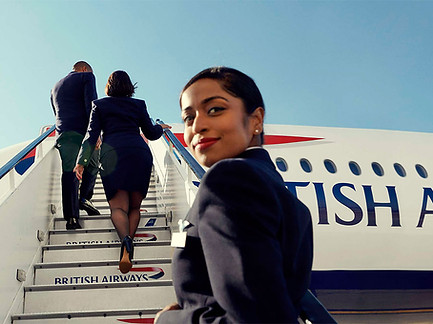

The average value of an unredeemed flight voucher
Customers do not redeem their flight vouchers

Research
From the UX side, we started to gather secondary data from different online sources to conduct research. The study conducted by The Center for Customer Experience Improvement in 2022 says 50% of customers do not redeem their flight vouchers. The average value of an unredeemed flight voucher is $200.
We also managed to interview people who have vouchers and haven't used them yet, to understand user experience and pain points and what can be a possible solution.
Initial User journey
After interviews, we analyzed the existing process of redeeming the eVouchers:
-
Customers have to find the email with the eVoucher reservation number.
-
Find the destination and flights available.
-
Review flight booking and enter eVoucher details.
-
See the customer's updated total and continue to payment.
Key takeaways
-
Too many steps in the current process of redemption
-
Customers forget they have a Voucher
How might we encourage customers to book flights using their flight vouchers.
Emphasising
We have created a proto persona- a hypothetical representation of our users, someone we can refer to during a discussion of potential ideas when considering the solution.

Approach
We collaborated with engineers and data scientists to tackle our challenge, being very realistic considering the time frame—less than 24 hours to work with.
Solution
After brainstorming ideas and sharing our findings, we all agreed that the solution focuses on making things easier for customers by prioritizing functionality and user-friendliness.
Ease mental load by reducing clicks required to use a eVoucher.
About the Process
After discussing solutions, we immediately began sketching out the design of the product. We aimed for clear communication with the team, ensuring confidence that our design could be translated into a real product by the software engineers in such a short time frame and aligned with a data-driven approach by the data scientists.
We had to develop the design and hand it over from 7 pm to 9 am, and the software engineers commenced coding from 9 am to 2 pm.
Improved features
Referring to the research key takeaways and problem space provided by British Airways, we implemented a button allowing customers to check if they have an eVoucher.
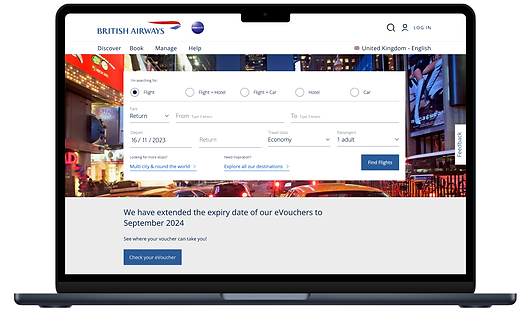

After tapping "Check your eVoucher," customers should enter their email in the provided box, and the system will automatically display whether they have a voucher or not
Following the email verification, the website presents personalized recommendations based on various data points. If customers possess more than one voucher, they can select the preferred one from the dropdown menu located in the top right corner

UI library
To ensure consistency and alignment with British Airways' branding, we adopted the same style, typography, and colours BA used on their website for designing the buttons, icons, and cards for our components and elements. By doing so, we aimed to provide a seamless and cohesive user experience, reinforcing familiarity for users accustomed to the airline's digital interface.
Buttons and input fields
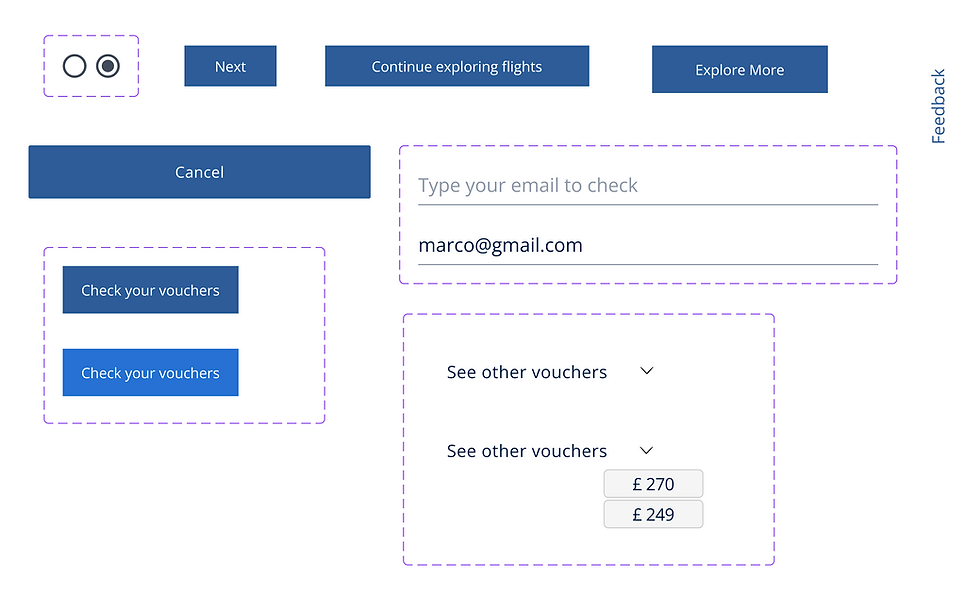
Cards

Key takeaways
1. Teamwork:
In projects constrained by time, it is crucial to be supportive and collaborative. Listening to different perspectives and clearly articulating one's viewpoint fosters constructive teamwork.
2. Realistic Solutions:
Despite the significant impact of creativity and ideas, the team prioritised creating an easy-to-navigate and highly user-centred solution. Emphasis was placed on understanding and addressing pain points effectively.
3. Data-Driven Innovation:
Integrating data analysis was crucial in developing user-centred products aligning with overarching business goals.

